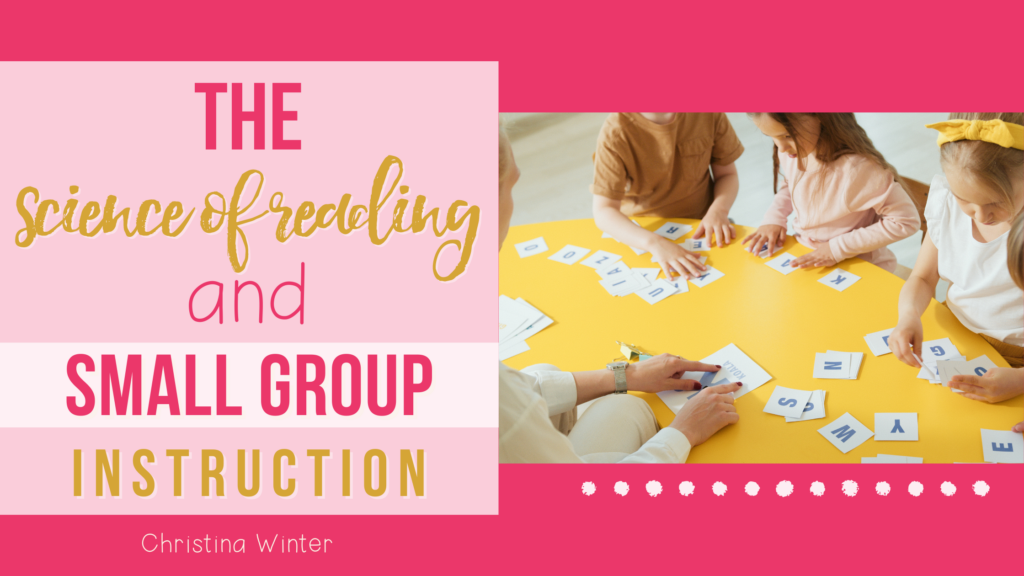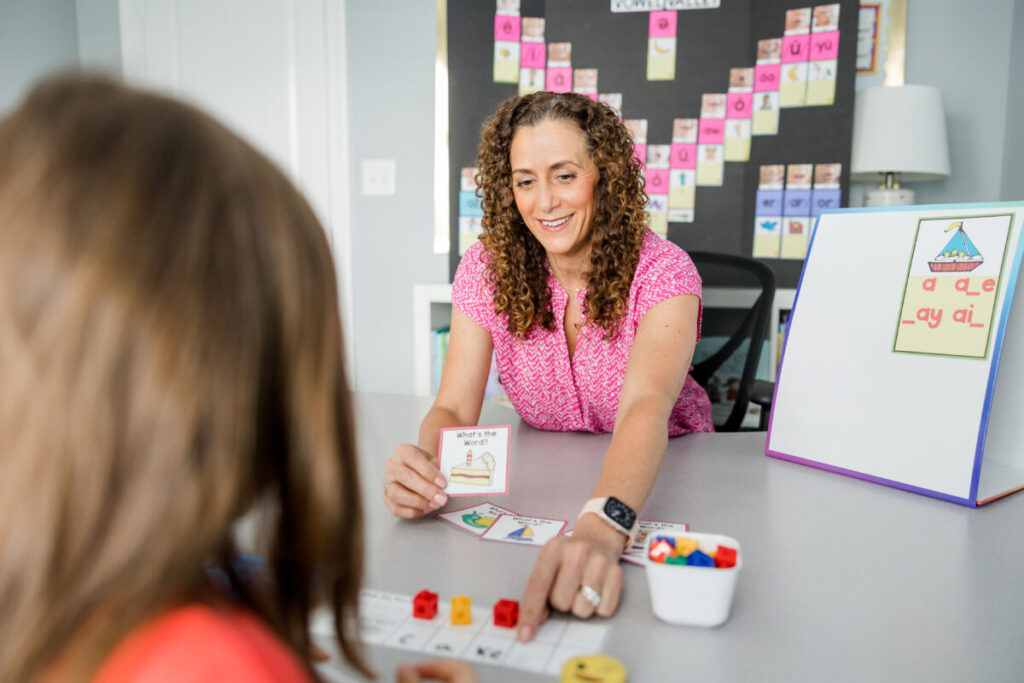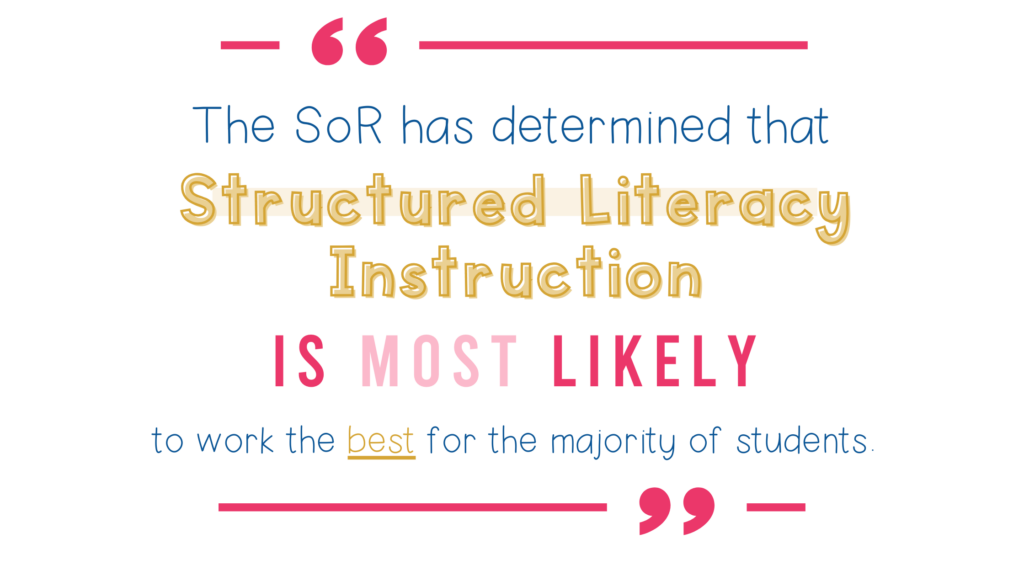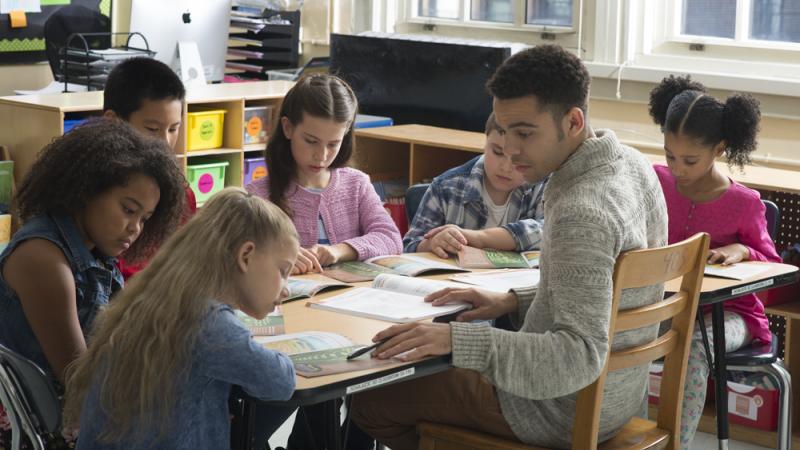

In this post, I share information about the Science of Reading, structured literacy, and small-group instruction. I define each term and explain why small-group instruction is so important for students.
Teaching children how to read is not always an easy task. Fortunately, we are teaching at a time when there is a lot of information about how children best learn to read. This information comes from the body of research referred to as the Science of Reading. Understanding the Science of Reading is important and makes our literacy instruction more effective.

What is the Science of Reading (SoR)?
The Science of Reading (SoR) is a body of research that examines how we learn to read and what methods best help children learn to read. It is not a curriculum. It is a summary of the findings of research from disciplines that include developmental psychology, educational psychology, cognitive science, and cognitive neuroscience. The Science of Reading has been documented around the world, in all languages and cultures.
This large body of research has determined that structured literacy instruction is most likely to work the best for the majority of students.

What is Structured Literacy?
Structured literacy is an instructional approach that emphasizes highly explicit and systematic teaching of all key components of reading instruction. The components of Structured Literacy include:
- Phonology. Phonology is the study of the sound structure of spoken words. Phonological awareness activities include rhyming, counting words in spoken sentences, and clapping syllables in spoken words. An important aspect of phonological awareness is phonemic awareness. This is the ability to segment words into sounds or phonemes.
- Sound-Symbol Association. Once students have developed phoneme awareness of spoken language, they learn how to map the phonemes to printed letters. Students learn to blend sounds and letters in words, as well as how to segment whole words into the individual sounds.
- Syllable Instruction. Teaching students the syllable types helps them understand how to break longer words into manageable parts. It allows them to read longer words more accurately and fluently. It helps to build their confidence as readers and gives them a strategy for attacking these longer, more challenging words
- Morphology. A morpheme is the smallest unit of meaning in the language. Structured Literacy includes the study of base words, roots, prefixes, and suffixes.
- Syntax. Syntax is the rules that tell us the sequence and function of words in a sentence to convey meaning. This includes grammar, sentence variation, and the mechanics of language.
- Semantics. Semantics is that aspect of language concerned with meaning. Structured Literacy must include instruction in the comprehension of written language.

Literacy expert Timothy Shanahan believes these strategies or skills should be explicitly taught to the whole class and then teachers should offer students additional differentiated practice in small groups.
What is Small Group instruction?
Small group instruction involves pulling aside a small number of students to provide individualized instruction. While there is no set number, most agree the small group should include no more than five or six students, but it could be as few as two.
In small group instruction, you form groups based on a shared skill deficit. Instruction focuses on filling in identified gaps in student learning and allows a teacher to target individual student needs. Small groups may include students who are at different places in their reading journey, but they still share a common skill deficit.

Why is Small Group Instruction Important?
Research has found that small-group instruction has a significant impact on student learning. Small groups allow you to provide explicit, targeted instruction to students based on their identified needs. It is an opportunity for students to receive the additional teaching and practice that is often needed for them to master the skills we teach.
Additionally, small group instruction allows a teacher to monitor student actions more closely and to provide frequent and individualized feedback. Correct responses receive immediate and specific reinforcement, while incorrect responses should be met with immediate corrective feedback.
Teaching in small groups allows you to perform informal assessments and collect data that helps drive your instruction. Watch closely as your students attempt a task to get a clear sense of their understandings and misconceptions.
Finally, students love their time in small groups. Research has found that students are 66% more likely to participate in a small group setting, rather than whole group. Of course, they love having your full attention, and the immediate feedback you provide helps to build a connection and can boost students’ confidence.

I hope the information I have shared here today has helped you better understand the Science of Reading, structured literacy, and the importance of small-group instruction. Be on the lookout for my next post where I’ll share tips for effective small-group instruction!









